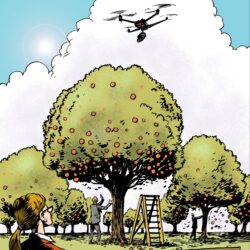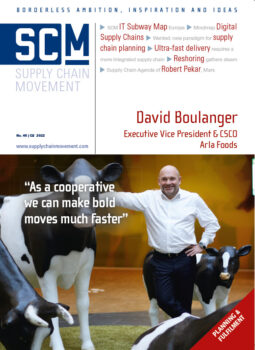Wanted: new paradigm for supply chain planning

There has been a significant increase in the uncertainty and unpredictability in supply chains in recent years. Supply chain planning is a constant struggle for many companies, because they have to change it more often than they would like. New technologies such as artificial intelligence and machine learning can help to improve demand planning and therefore supply chain planning as a whole. But more and more experts are claiming that technology alone is not enough.
Have you ever tried to catch a ripe apple falling from a tree before it hits the ground? No matter how alert and agile you are, the apple never lands where you expect. It’s lying bruised on the ground before you can react. That’s how many supply chain professionals must feel today.
They have seen a significant increase in the uncertainty and unpredictability in their supply chains over the past two years. First, COVID-19 led to unexpected shifts in supply and demand, and most global supply chains are still feeling the effects today. And now, before stability could return, the Russian invasion of Ukraine is causing new disruptions. It seems to have become almost impossible to predict when and where demand will be using traditional systems and forecasting methods. The plan is outdated before everyone has approved it.
Internationally active companies in particular face major challenges. “We have always had uncertainties, but they were caused by things like a snowstorm in North America or a strike by Brazilian truck drivers. Now, there are many more uncertainties and they have a much greater impact,” says Tineke Kok, Global IBP Manager at tea and coffee producer Jacobs Douwe Egberts (JDE).
Since joining JDE four years ago, Kok has been responsible for demand planning within the global integrated business planning (IBP) process. The company has 60 local organizations… … …
Want to read more?
 Download Supply Chain Movement Q2, 2022 for free.
Download Supply Chain Movement Q2, 2022 for free.










